On-orbit assembly of the still crew-tended International Space Station (ISS), begun in November 1998, was ready to resume in mid-2000 with the launch of the Russian-built Zvezda Service Module (SM), providing living accommodations for long-duration crews including environmental control and life support equipment. On Feb. 11, 2000, senior managers from the U.S., Russia and the European Space Agency established July 8 to 14 as the launch window for the module, with July 12 as the optimal date. With Zvezda’s launch date firmly set, on Feb. 18 NASA managers decided to split the next Shuttle resupply mission, STS-101 and designated as 2A.2 in the overall ISS assembly sequence, into two separate flights. The first kept the STS-101 number but was redesignated as 2A.2a and scheduled to fly prior to the arrival of Zvezda. The second became a new flight, STS-106 and 2A.2b, with a planned launch date after Zvezda’s arrival to finish outfitting the module before the Expedition 1 crew arrived in early November. Both missions made use of a Spacehab pressurized module in the Shuttle’s payload bay to transport supplies to ISS.
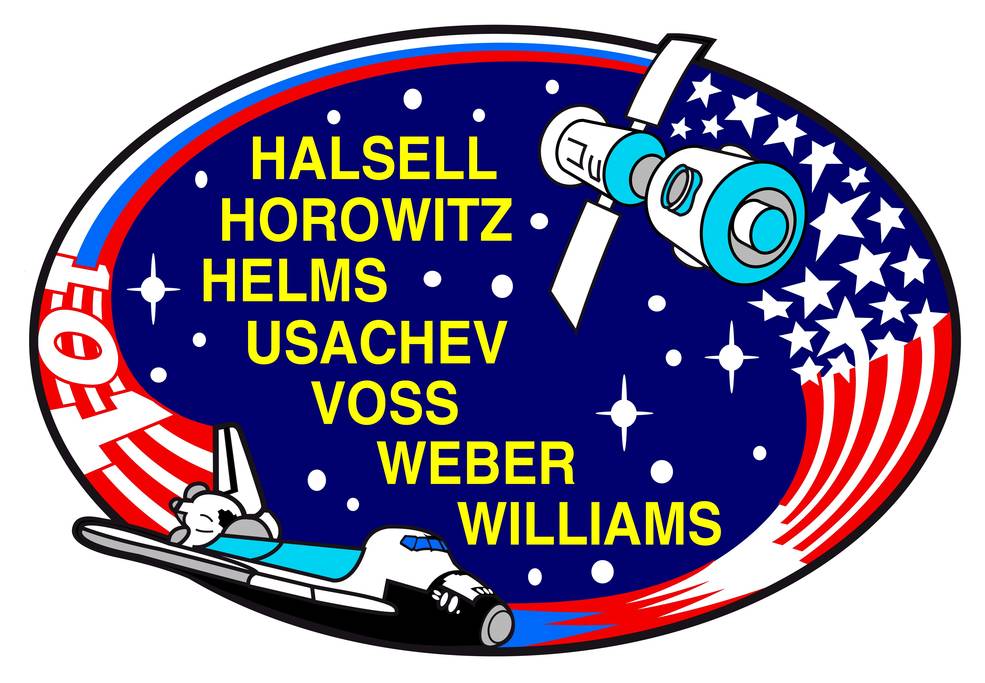
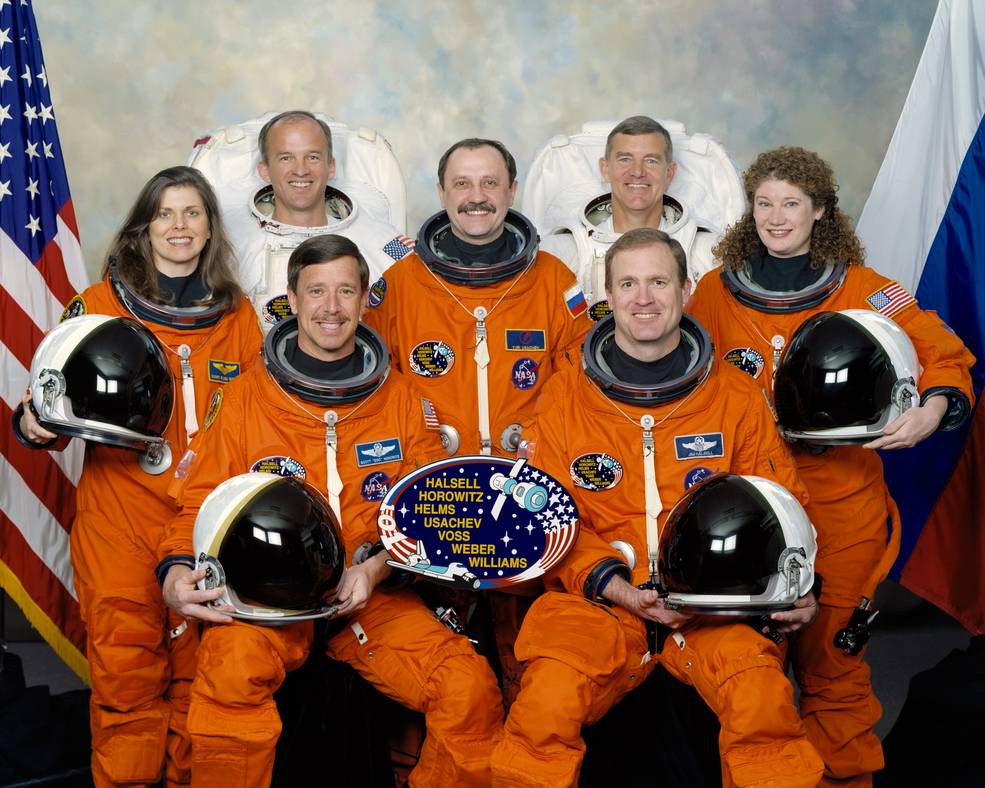
Left: STS-101 crew patch. Right: STS-101 crew photo (in front, left to right)
Horowitz and Halsell; (middle, left to right) Weber, Usachev and Helms;
(in back, left to right) Williams and Voss.
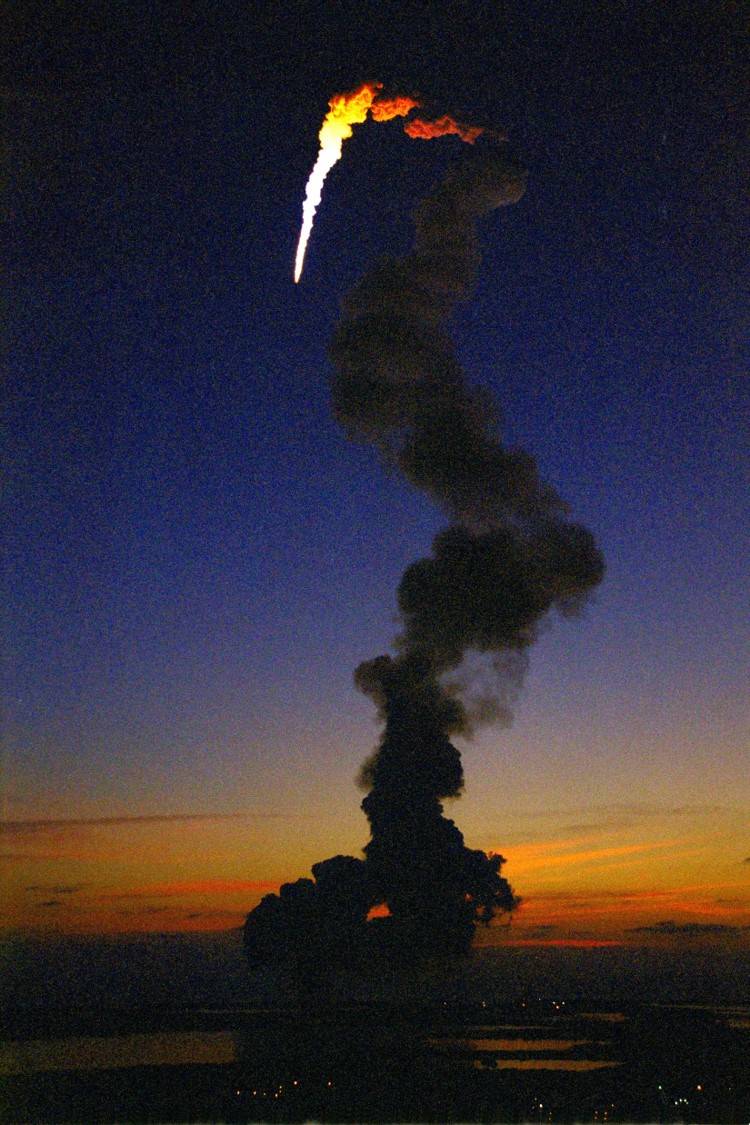
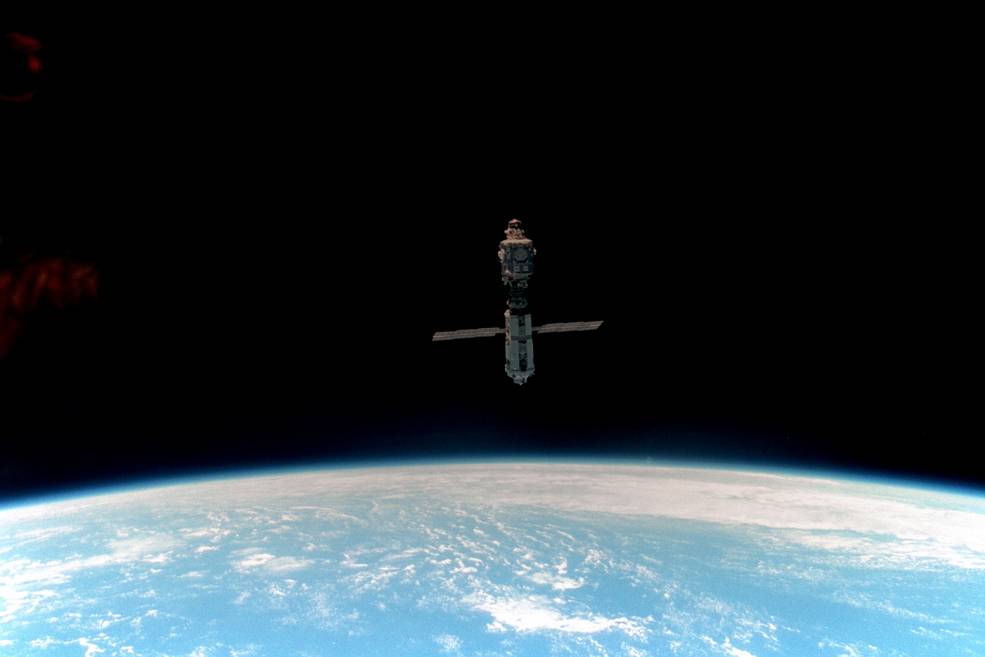
Left: Launch of Atlantis on Shuttle mission STS-101.
Right: View of ISS from Atlantis during the rendezvous and docking maneuver.
The third Space Shuttle assembly and resupply mission to ISS took off on the morning of May 19, 2000, with its seven-person crew of Commander James D. Halsell, Pilot Scott J. Horowitz, and Mission Specialists Mary Ellen Weber, Jeffrey N. Williams, James S. Voss, Susan J. Helms and Yuri V. Usachev. Voss, Helms and Usachev comprised the ISS Expedition 2 crew and had been added to STS-101 after managers split the mission, giving them a sneak preview of their future home in space. Less than two days after launch, Halsell guided Atlantis to a smooth docking with the two-module space station, the first visit to ISS since the STS-96 mission one year earlier.
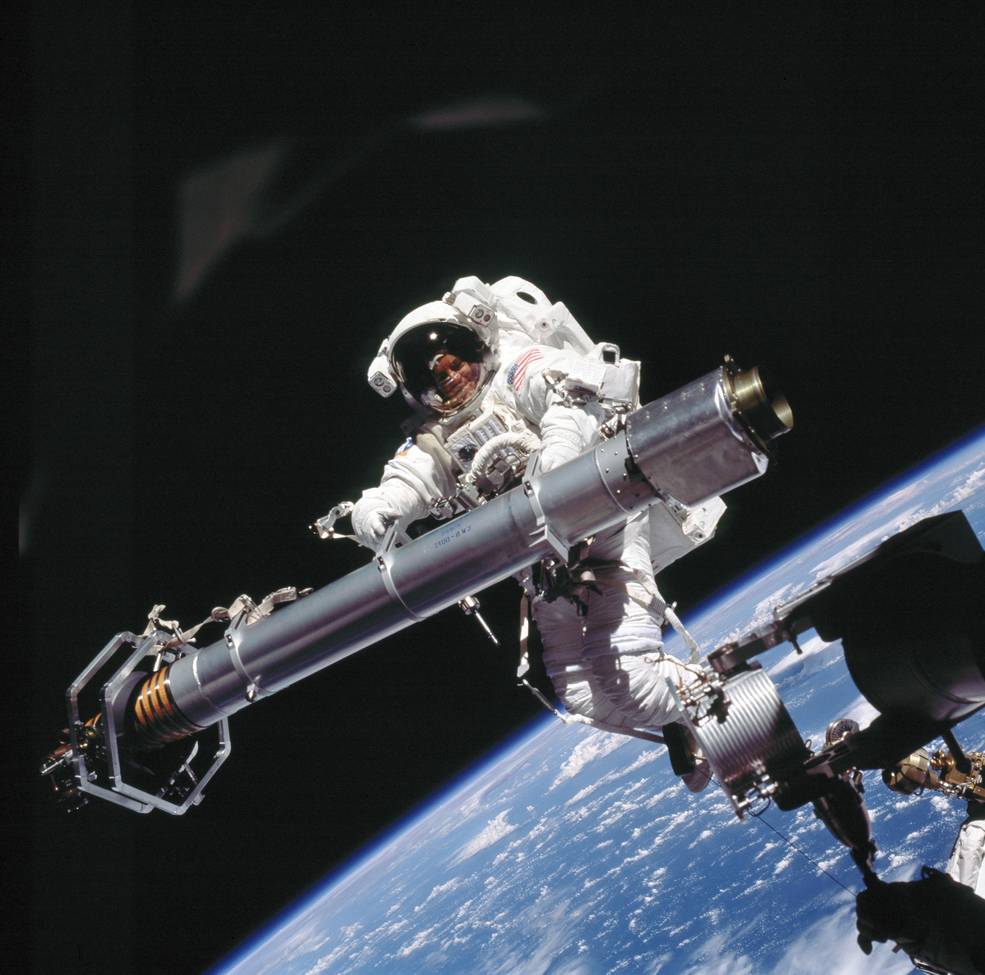
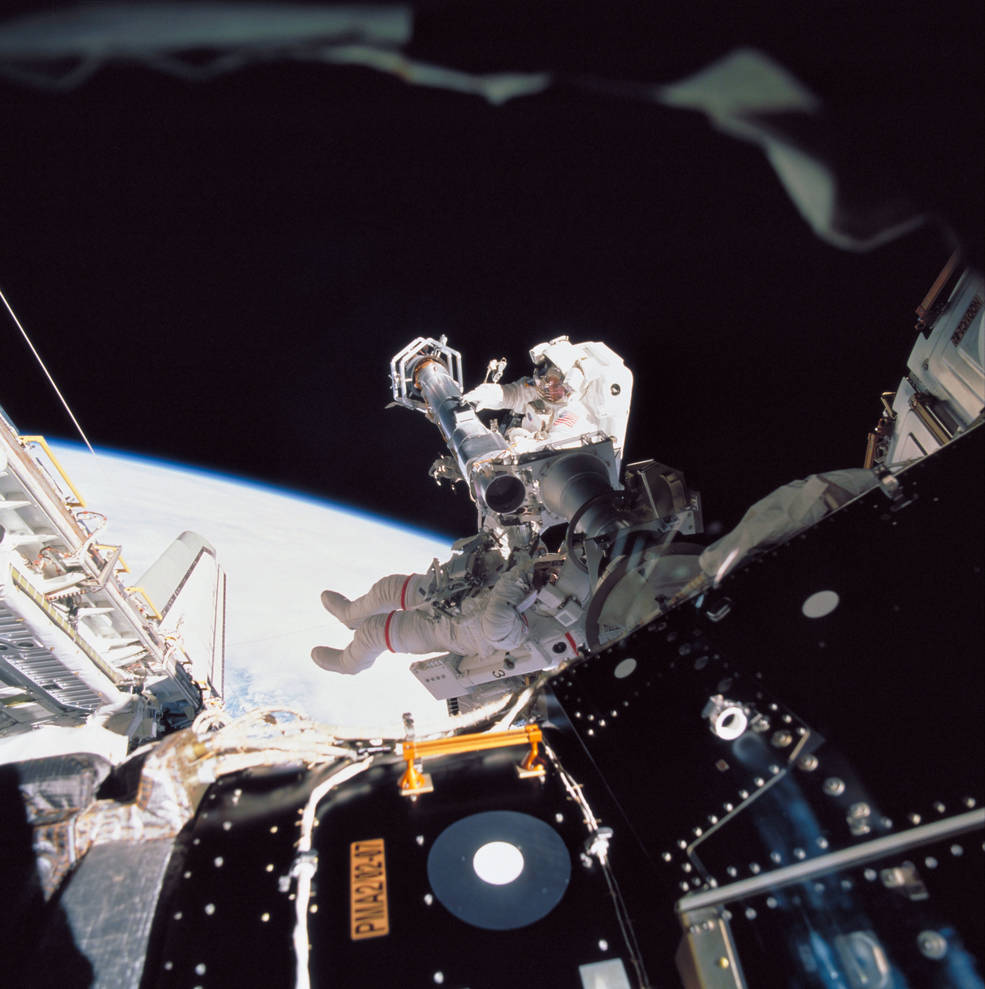
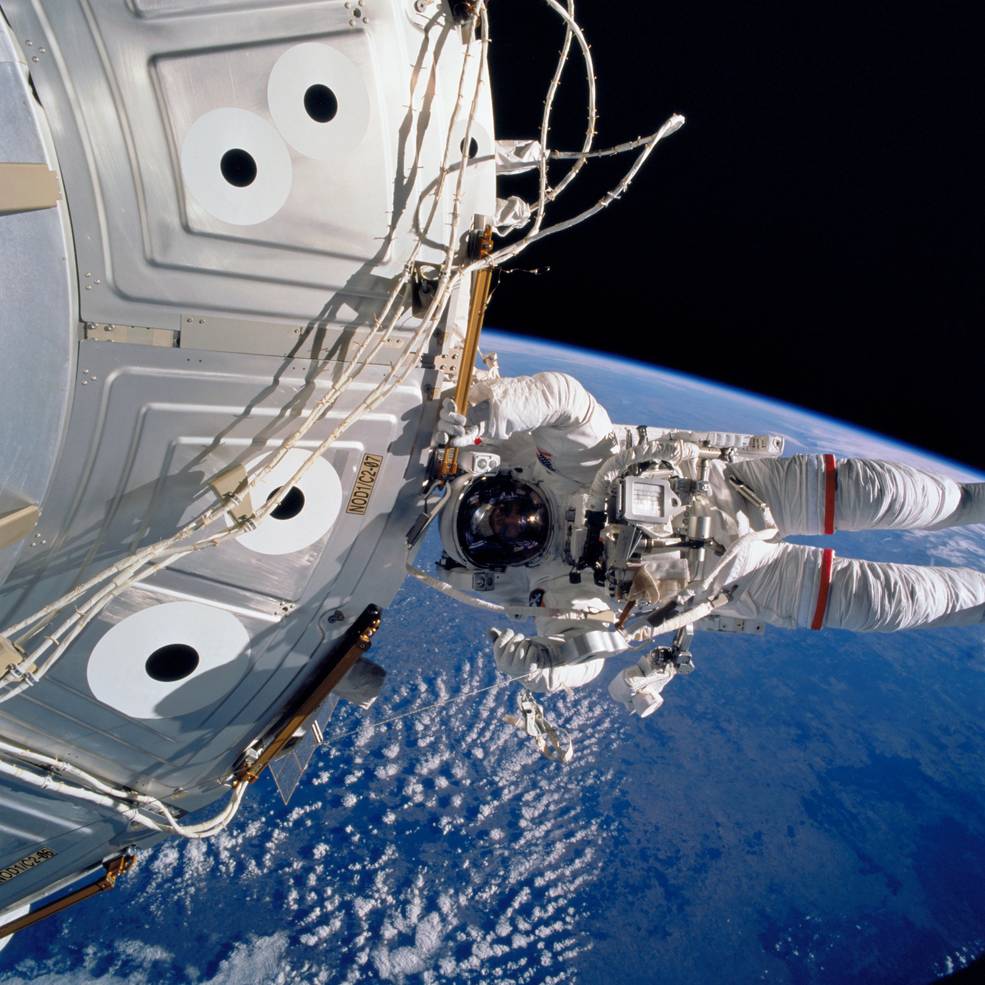
Left: Voss holding the Strela boom. Middle: Williams (in suit with red stripes) and Voss
prepare to install the Strela boom. Right: Williams holding on to a handrail on Unity.
The day after docking, Williams and Voss exited the Shuttle’s airlock to begin one of the flight’s major objectives. With Weber operating the robotic arm from inside the Shuttle, the two astronauts first installed the boom of the Russian Strela robotic system onto Zarya. They then replaced a faulty communications antenna and installed eight handrails and a camera cable on the Unity Node 1module, completing the Extravehicular Activity (EVA) or spacewalk in 6 hours and 44 minutes.
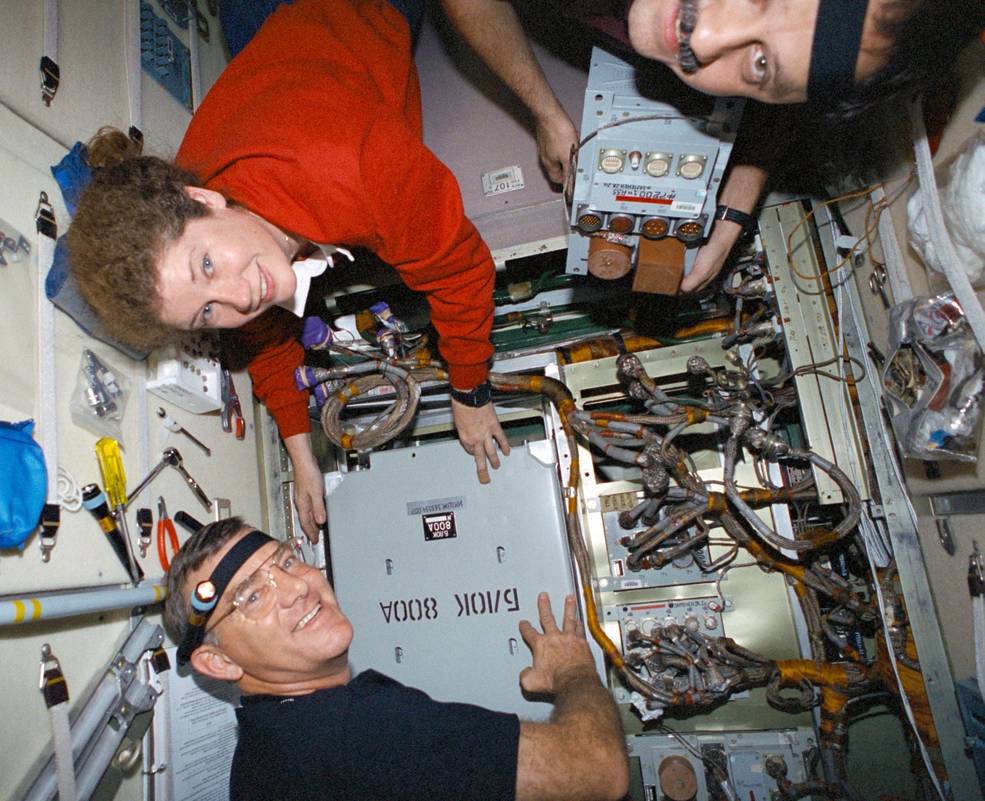
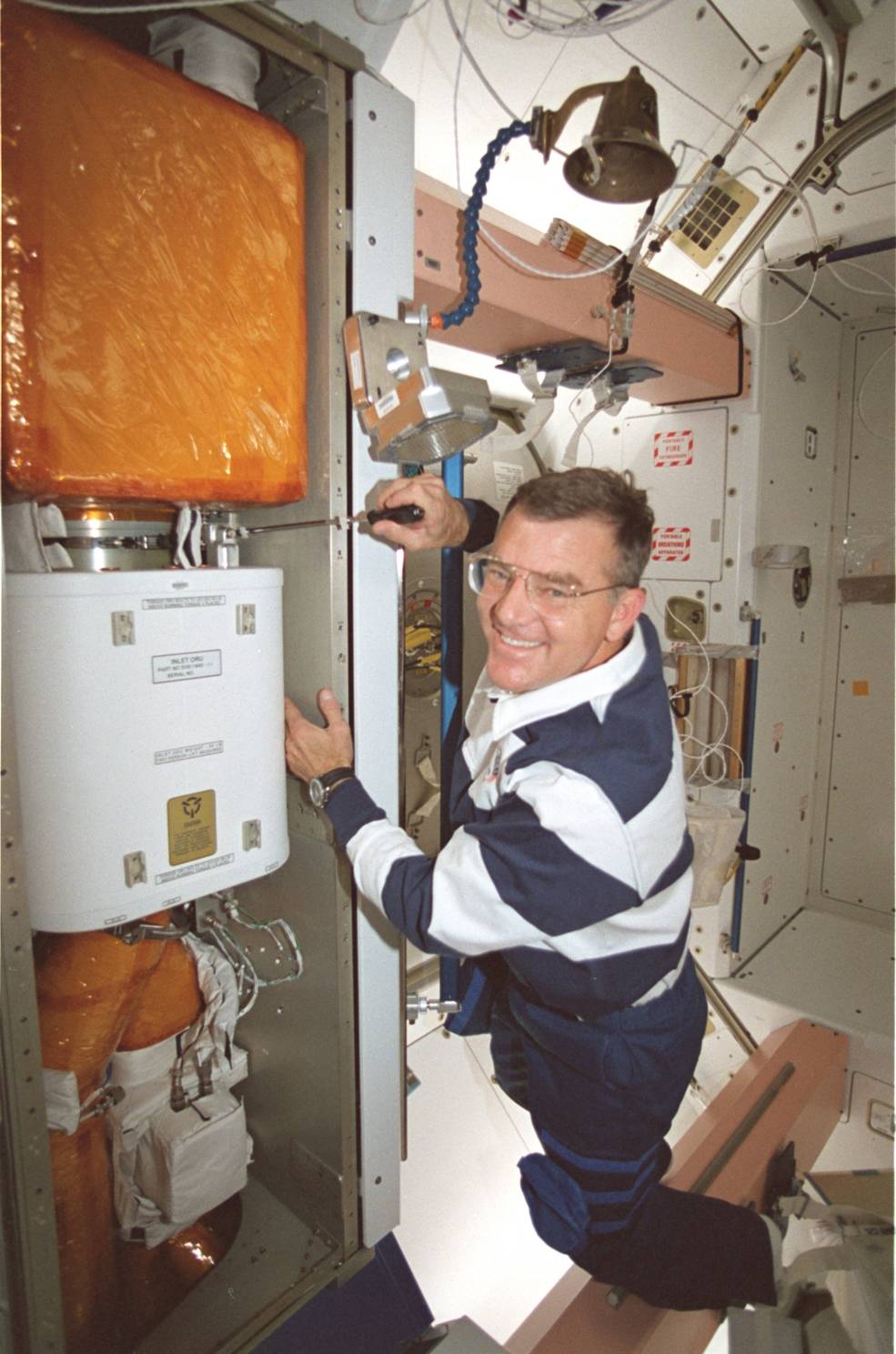
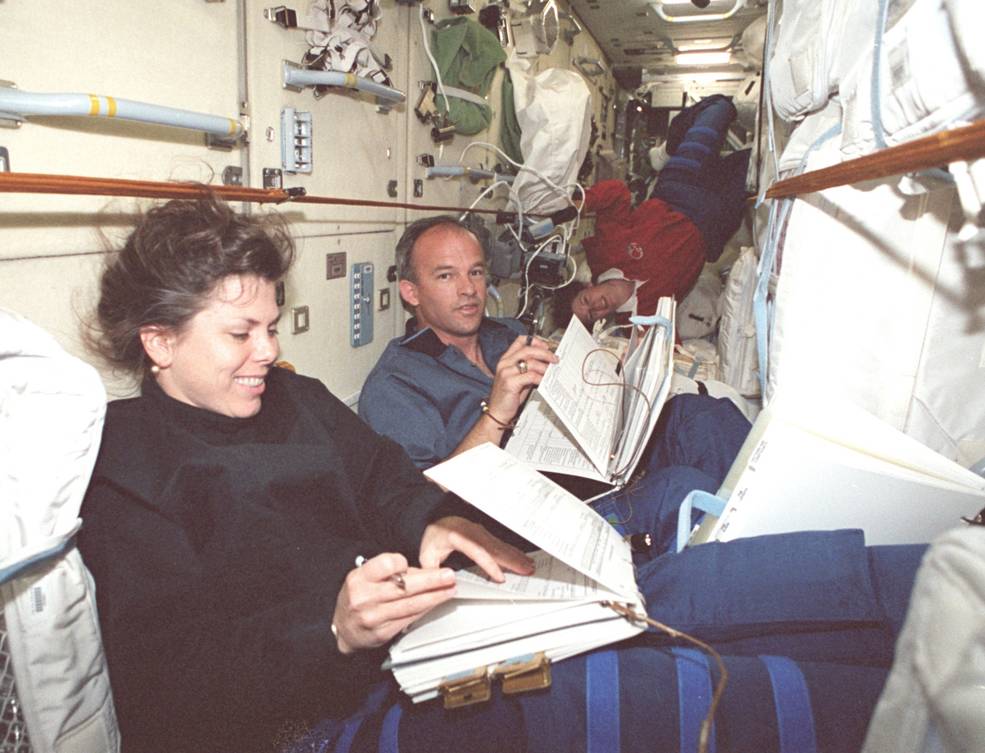
Left: Voss (at bottom), Helms and Usachev replacing batteries in Zarya.
Middle: Voss replacing a power distribution box in Unity.
Right: Weber (at left), Williams and Helms working in Zarya.
The day after the EVA, the astronauts opened the hatches between the Shuttle and ISS to begin logistics transfers and repairs and maintenance on the station. The highest priority activity, carried out by Usachev, Helms and Voss, involved replacing four of the six power storage batteries in Zarya. Due to delays in the launch of Zvezda, the batteries in Zarya had operated far longer than expected. The crew also installed 10 smoke detectors and four cooling fans in Zarya and a new power distribution box for the backup US communications system in Unity. Overall, the crew completed 42 separate repairs inside the station.
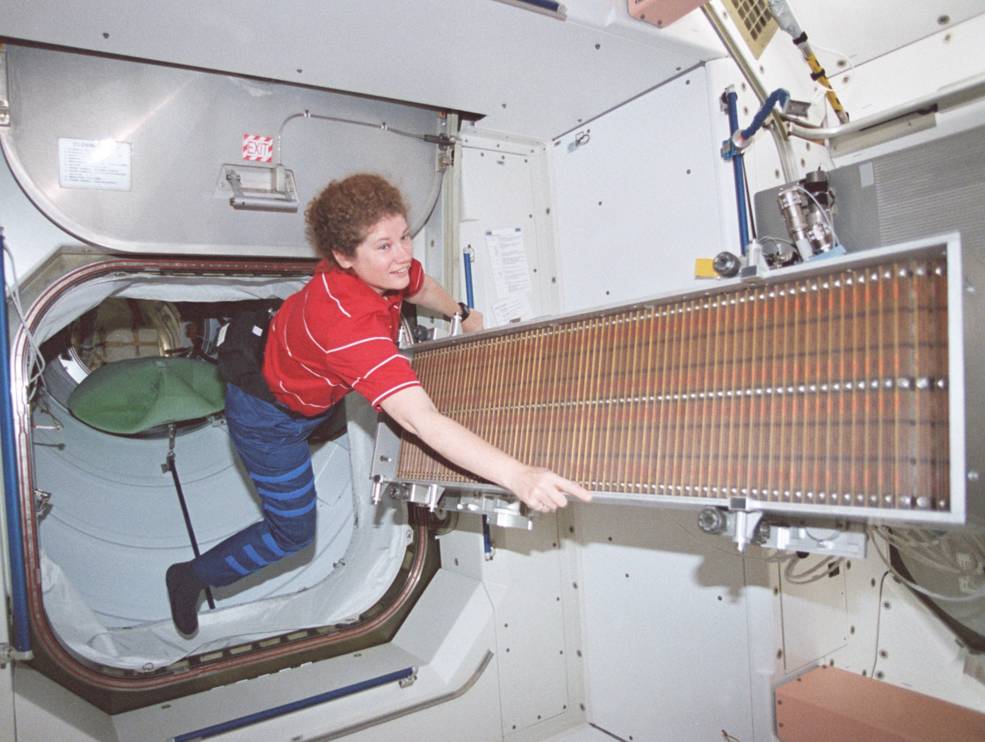
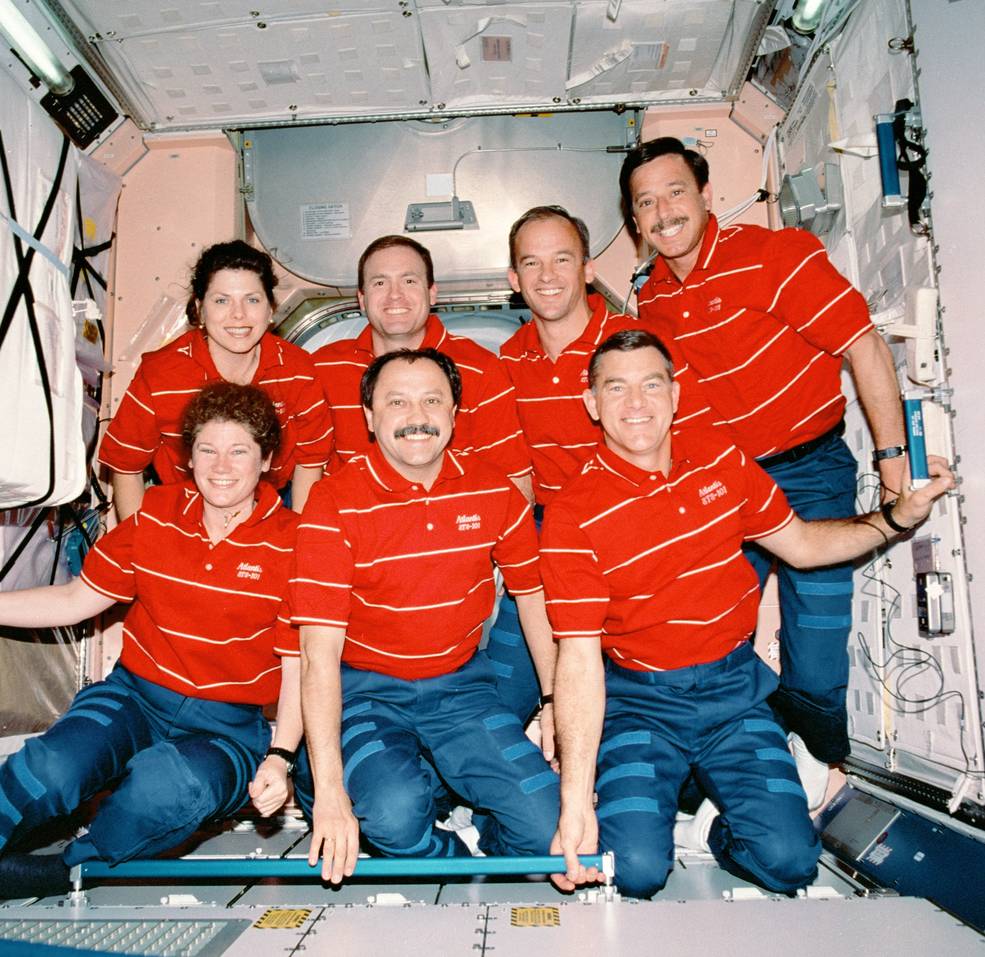
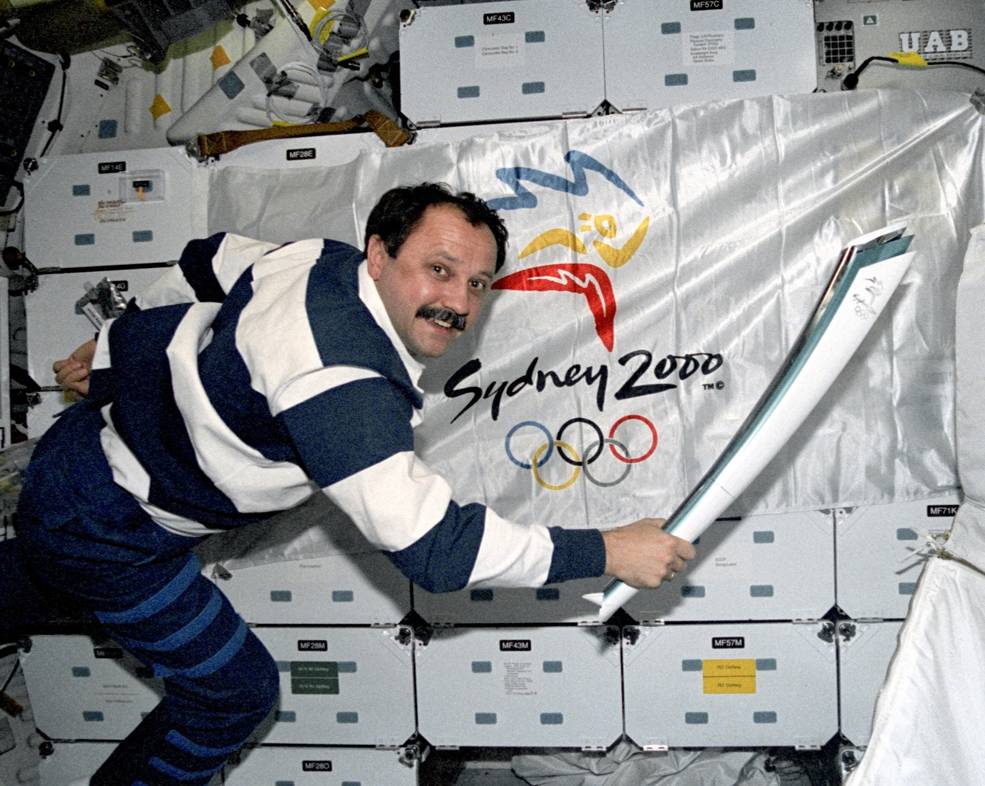
Left: Helms transferring the tread for the treadmill into Zarya.
Middle: The STS-101 crew poses in Unity.
Right: Usachev holding a replica of the Olympic torch for the 2000 Sydney summer games.
The astronauts transferred more than 3,000 pounds of exercise and medical equipment, crew supplies and water to ISS in preparation for the Expedition 1 crew’s arrival later in the year. They also transferred about 1,300 pounds of equipment no longer needed on ISS back to the Shuttle for return to Earth. Over the course of three days, the crew fired the Shuttle’s thrusters to raise the orbit of ISS by 27 miles, placing it in the proper position for the arrival of Zvezda in July. With the 2000 Summer Olympic Games scheduled to be held in Sydney in September 2000, Australian-born NASA astronaut Andrew S.W. Thomas arranged for a replica of the Olympic torch, minus the flame, to be flown aboard Atlantis. The STS-101 astronauts displayed it in front of an Olympic banner in the Shuttle middeck as it flew over parts of the Earth where the Olympic torch relay was taking place.
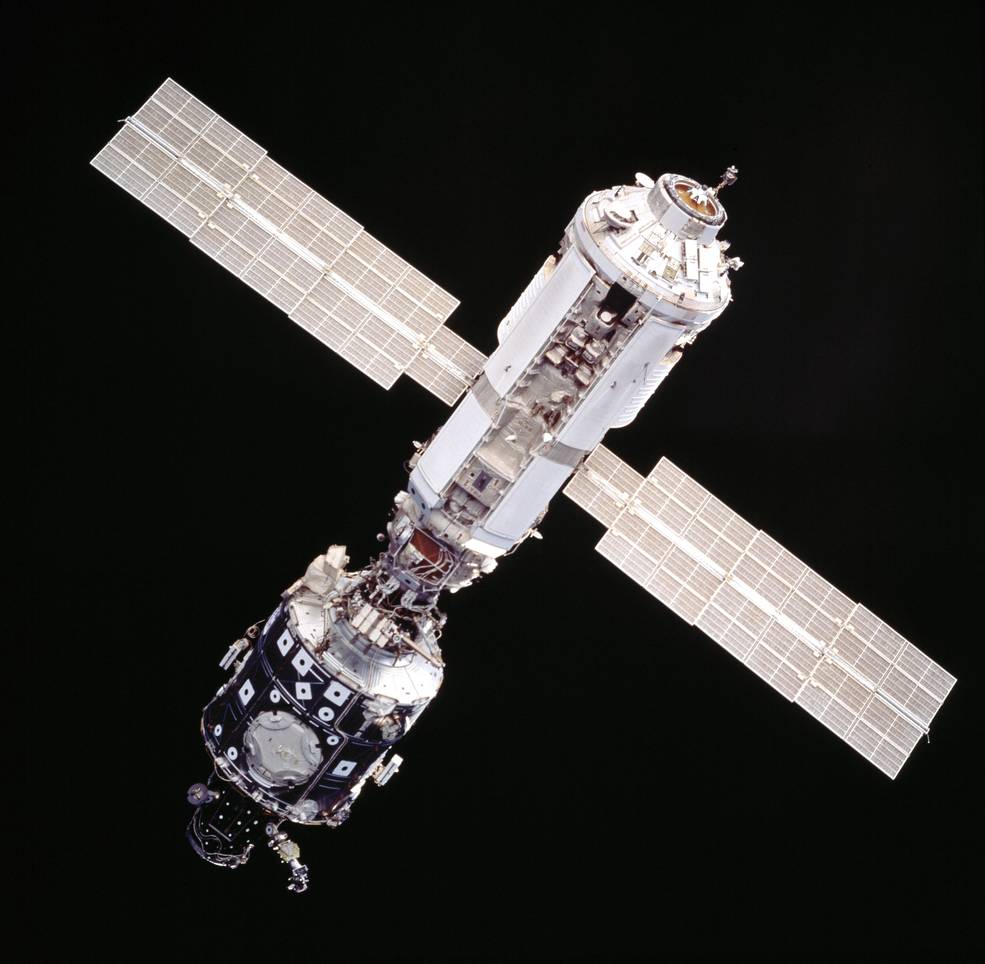
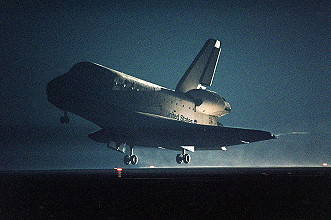
Left: A refurbished ISS as seen from Atlantis during its departure.
Right: Atlantis makes a smooth night landing at Kennedy Space Center.
With Horowitz at the controls, Atlantis undocked from ISS on May 26 and completed a fly around of the refurbished station, with the crew taking photographs to document its condition. On May 29, the crew closed Atlantis’ payload bay doors, put on their launch and entry suits, strapped into their seats and fired the Shuttle’s engines for the trip back to Earth. Halsell guided Atlantis to a smooth night landing on the Shuttle Landing Facility at Kennedy Space Center, ending a highly successful 10-day mission to prepare ISS for its first occupants.
Enjoy the crew narrate a video about the STS-101 mission.























